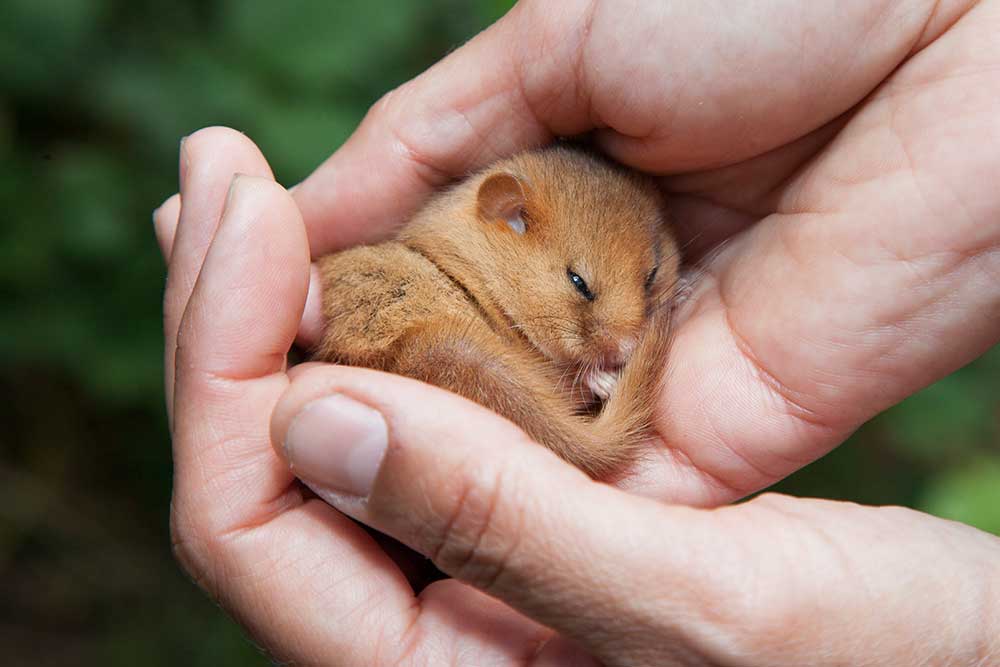Search by topic
Free advice about how to apply the hedgerow lifecycle to healthy hedge management Today, wildlife charity People’s Trust for Endangered Species (PTES) launches a brand-new ‘Healthy Hedgerows’ app, aimed at farmers and land managers that want to make – or adjust – their hedgerow management plans to grow the healthiest of hedges. Designed for farmers, …
Read article...Dormice reintroduction June 2021 We were delighted to team up with various partners to release the 1000th hazel dormouse in Lancashire last week. Thirty animals were released into a woodland in the Arnside and Silverdale Area of Outstanding Natural Beauty (a nationally protected landscape covering parts of north Lancashire and south Cumbria). Reintroductions are crucial …
Read article...Along with our partners at Natural England, PTES collate records from over 400 dormouse monitoring sites across the UK. The NDMP now has hundreds of trained monitors regularly checking dormouse boxes throughout the year. We’re extremely grateful to all our dormouse monitors for their great contribution to dormouse conservation. How long have you been monitoring for? …
Read article...All organisms shed DNA into the environment. Sources of DNA include mucus, hair or fur, skin, urine and faeces. This environmental DNA, or eDNA, can be extracted from samples taken in the wild (usually soil or water) and used to detect different species, measure biodiversity, and even look at the abundance of different animals. It’s …
Read article...A project at Fingle Woods A woodland conservation scheme that PTES is funding in partnership with the Heritage Lottery Fund is making new discoveries about how dormice colonise recovering habitat. The project is located in Fingle Woods, a site jointly owned by the National Trust and Woodland Trust, in the north of Dartmoor in Devon. …
Read article...New ‘Map your log pile’ survey launched by wildlife charity this June. This June, and to time with National Insect Week (which starts today), wildlife charity People’s Trust for Endangered Species (PTES) has launched a brand-new garden survey, ‘Map your log pile’, to help save endangered stag beetles and other wildlife. PTES is asking anyone …
Read article...Conservation milestone reached as 30 hazel dormice are released into Lancashire as part of national reintroduction programme and local ‘Back on our Map’ species recovery efforts. This week, the 1,000th hazel dormouse (Muscardinus avellanarius) will be reintroduced to the UK by wildlife charity People’s Trust for Endangered Species (PTES), Natural England and the University of …
Read article...Isabel Fry has been out surveying water voles as part of the National Water Vole Monitoring Programme, which PTES runs every year. Find out more about the programme and get involved here. Found along our waterways, water voles are similar-looking to the brown rat, but with a blunt nose, small ears and furry tail. Sadly, …
Read article...It’s that time of year again when spring is upon us. The birds are singing in the trees, the bees are buzzing in the meadows and all around us there are many species of mammal that are performing courtship displays, some of which are very intricate and surprising. I’m sure we’ve all seen squirrels chasing …
Read article...We know very little about hibernation in those British mammals that use this strategy to survive winter periods when food is scarce. It’s possibly a vulnerable time for these animals. Both hedgehogs and hazel dormice hibernate on the ground. This helps them keep their temperatures and humidity levels relatively stable. However, we do know that …
Read article...Public urged to build on positive relationship with nature during Covid lockdowns. For the first time, wildlife charity People’s Trust for Endangered Species (PTES) is running its Living with Mammals survey throughout all of 2021, starting this week. PTES saw record-breaking numbers of volunteers taking part last year, thanks to more people being at home …
Read article...We’ve heard lots of stories about the differing impacts of the pandemic across the globe. Many of us had to slow down and stay at home. Others ended up busier than ever. Mohammad Farhadinia’s team, working in the mountains of Iran, were certainly busy; “Our conservation work could not afford to pause. During 2020, our …
Read article...Press and media
For all media enquiries please contact Jane Bevan or Adela Cragg at Firebird Public Relations on 01235 835297 or email ac@firebirdpr.co.uk.












